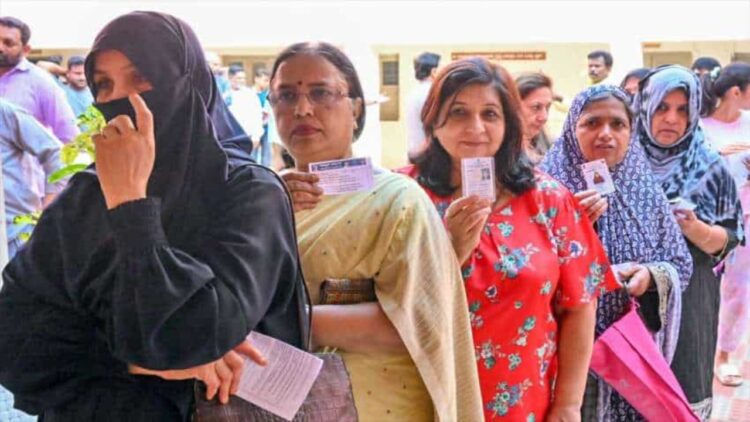KEY POINTS
- Muslim population up 94%, Lingayats drop to third in numbers.
- BJP alleges Congress tampered with caste census data.
- Report proposes 51% OBC quota, doubles Muslim reservation.
The recently revealed Karnataka Caste Census report has triggered a political storm, especially over revelations about the demographic rise of the Muslim community and a decline in the population of Lingayats. The report indicates a nearly 90% surge in the Muslim population over the past 30 years, while the Lingayat community has shown only marginal growth, resulting in a significant drop in their population ranking within the state.
Caste Census: Methodology and Key Findings
The Karnataka Caste Census, conducted to assess community-wise population data, draws comparisons with earlier surveys—namely the Venkataswamy Commission (1984) and the Kantharaju Commission (2015). The latest findings show significant shifts:
- Veerashaiva Lingayats, who topped the charts in 1984 with 61 lakh, grew to 66 lakh by 2015, marking only an 8.5% increase. This decline in relative numbers has pushed them to third position among major communities.
- The Scheduled Castes (SC) population jumped from 57 lakh to 1 crore, reflecting a 90% increase.
- The Muslim community grew from 39 lakh in 1984 to 76 lakh, registering a 94% increase.
These figures not only underline demographic shifts but also ignite questions about the socio-economic factors behind such changes.
Rising Muslim Numbers vs. Lingayat Decline: Political and Social Implications
The sharp increase in the Muslim population and the relative decline of the Lingayats have caused deep political reverberations. The Lingayats, once constituting 17% of Karnataka’s population, have now slipped behind, prompting debates around community representation, resource allocation, and political influence.
This dramatic change has met with fierce resistance from the BJP, which has challenged the authenticity of the report, alleging manipulation. BJP leaders claim the original data is controlled by CM Siddaramaiah’s office, suggesting the figures have been doctored for political gain.
Political Fallout and Intra-Party Discord
The census report has further intensified political rivalries:
- BJP state president B Y Vijayendra slammed the Congress government, accusing it of intentionally inflaming caste tensions. He underscored the need for accurate representation and warned against actions that could foment communal unrest.
- Even within the Congress party, discontent is simmering. Congress MLC Nagaraj Yadav raised concerns about the underrepresentation of Golla, Kadugolla, and Yadava communities, stating the numbers are significantly lower than actual figures. His criticism reflects the internal friction within the ruling party, complicating its position.
Broader Socio-Economic Lens
Demographic trends can often be attributed to broader factors. The Muslim community’s population rise may be influenced by higher fertility rates, migration, and improved socio-economic conditions. On the other hand, the Lingayat community’s slow growth might stem from reduced fertility, urban migration, or economic transitions that affect population patterns.
Radical Reservation Recommendations
Compiled by Jayaprakash Hegde, the report also suggests drastic revisions to the state’s reservation policy, using the Kantharaju Commission’s data as its base.
Key proposals include:
- Raising OBC reservation from 32% to 51%, a massive 19% increase.
- Reclassification of backward classes into five new categories, including splitting Category 1 into 1A and 1B, to better accommodate tribal, nomadic, and semi-nomadic groups.
- Under the proposed structure:
- Category 1A to get 5%,
- Category 1B to get 6%,
- An additional 12% reserved under other classifications.
- Category 2A’s quota would drop from 15% to 10%.
- Muslim community’s reservation (Category 2B) would double from 4% to 8%.
- Category 2C and 2D reservations would also undergo changes.
These revisions are being pitched as a way to ensure greater social equity, but critics warn they may cause more harm than good.
Consequences and Concerns
The proposed changes have invited sharp scrutiny and raise significant red flags:
- Community Imbalance: The reduction of reservation for groups like Category 2A while doubling the Muslim quota could create a perception of favouritism and disenfranchisement.
- Marginalising Existing Beneficiaries: Communities that have long benefited from reservations fear that these reforms may erode the gains made over decades, replacing justice with political convenience.
- Threat to Social Cohesion: Rather than fostering unity, such radical shifts could trigger resentment and social discord, further fracturing Karnataka’s social fabric.
Call for Caution and Balanced Policy Making
While the original goal of reservations is to rectify historical injustices, these tools must be used judiciously. Reservation policies should not become political instruments to appease selected groups at the cost of alienating others.
A more balanced, inclusive, and transparent approach is needed—one that includes:
- Constructive community dialogue
- Evidence-based representation
- Fair and equitable distribution of resources
The Karnataka government must reassess the proposed changes with the larger social picture in mind, ensuring no community feels sidelined or favoured unduly. Only through compassion, careful consideration, and open dialogue can Karnataka move towards a more united and equitable society.















Comments